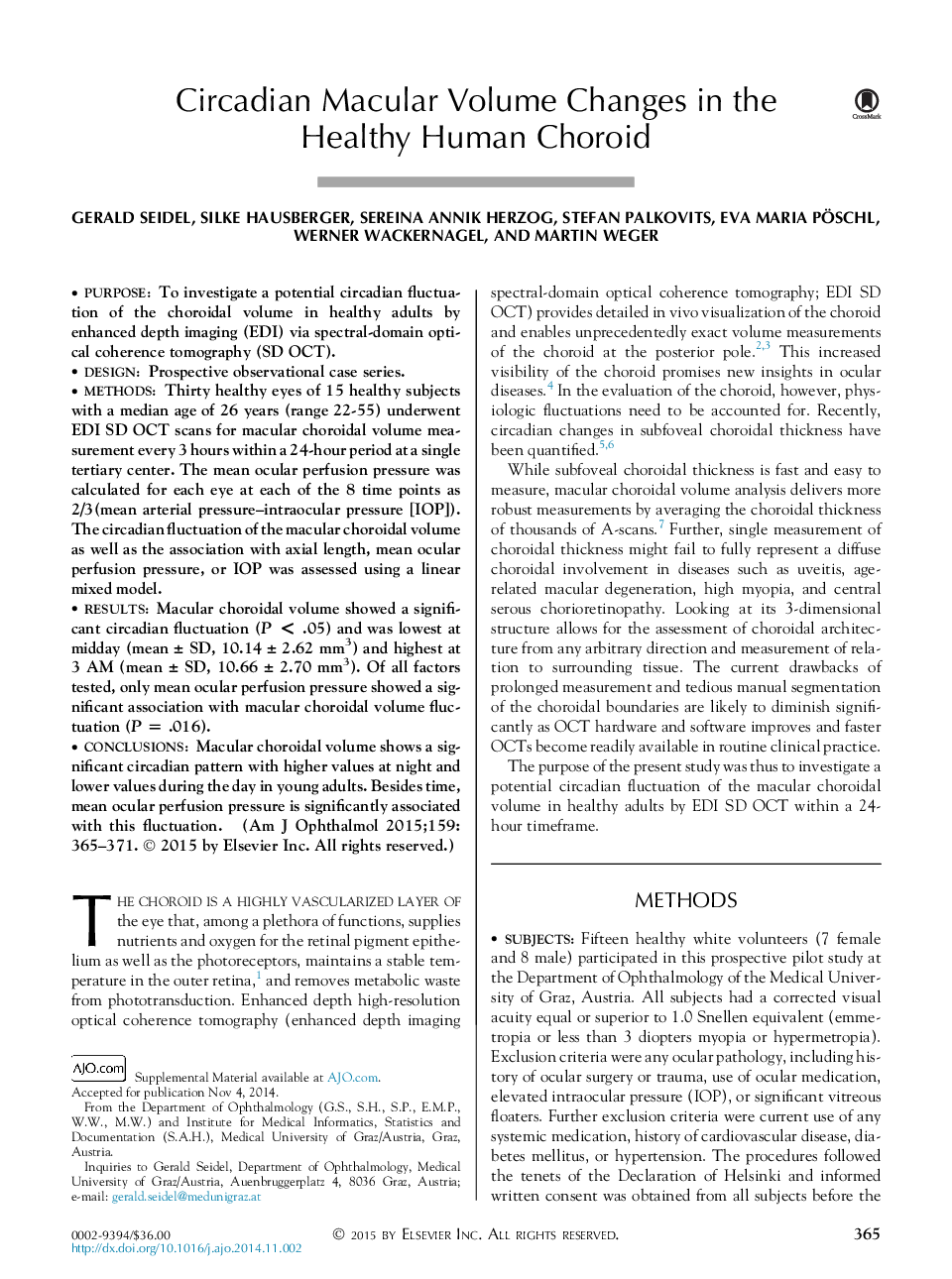| Article ID | Journal | Published Year | Pages | File Type |
|---|---|---|---|---|
| 6195654 | American Journal of Ophthalmology | 2015 | 9 Pages |
PurposeTo investigate a potential circadian fluctuation of the choroidal volume in healthy adults by enhanced depth imaging (EDI) via spectral-domain optical coherence tomography (SD OCT).DesignProspective observational case series.MethodsThirty healthy eyes of 15 healthy subjects with a median age of 26 years (range 22-55) underwent EDI SD OCT scans for macular choroidal volume measurement every 3 hours within a 24-hour period at a single tertiary center. The mean ocular perfusion pressure was calculated for each eye at each of the 8 time points as 2/3(mean arterial pressure-intraocular pressure [IOP]). The circadian fluctuation of the macular choroidal volume as well as the association with axial length, mean ocular perfusion pressure, or IOP was assessed using a linear mixed model.ResultsMacular choroidal volume showed a significant circadian fluctuation (P < .05) and was lowest at midday (mean ± SD, 10.14 ± 2.62 mm3) and highest at 3 AM (mean ± SD, 10.66 ± 2.70 mm3). Of all factors tested, only mean ocular perfusion pressure showed a significant association with macular choroidal volume fluctuation (P = .016).ConclusionsMacular choroidal volume shows a significant circadian pattern with higher values at night and lower values during the day in young adults. Besides time, mean ocular perfusion pressure is significantly associated with this fluctuation.
